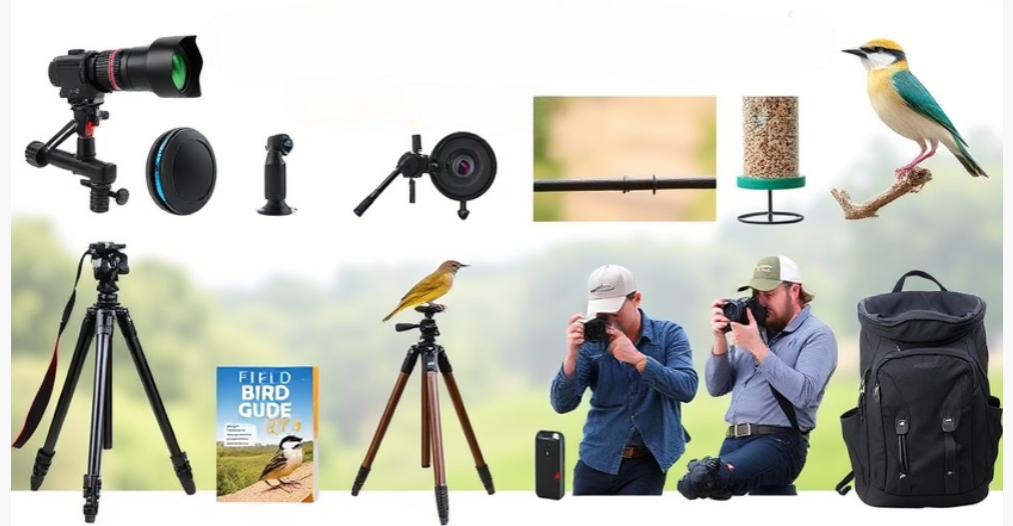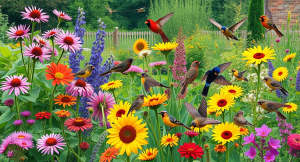
8 Essential Tools for Bird Photography
Choosing the Right Camera Gear for Bird Photography

Bird photography requires specialized camera gear to capture the beauty and detail of these remarkable creatures. One essential piece of equipment is a telephoto lens, specifically designed to bring distant subjects closer without losing sharpness. A lens with a focal length of 300mm or longer is recommended to capture birds in their natural habitat without disturbing them. This allows photographers to fill the frame with stunning close-ups, revealing intricate feather patterns and vibrant colors that might otherwise go unnoticed.
In addition to a telephoto lens, a sturdy tripod is an indispensable tool for bird photography. It provides stability and reduces the risk of camera shake, especially when shooting in low light or using a long lens. A tripod allows photographers to compose their shots precisely and patiently wait for the perfect moment to capture birds in action. It also helps minimize the fatigue that can occur from handholding heavy gear for extended periods. Investing in a quality tripod is well worth it for capturing sharp and professional bird photographs.
Essential Lenses for Capturing Birds in Detail

Bird photography requires the use of specific lenses to capture the intricate details of these fascinating creatures. One essential lens for capturing birds in detail is the telephoto lens. With its long focal length, this lens allows photographers to get up close to birds without disturbing them. It provides a clear and sharp image, highlighting the fine feathers and intricate patterns that make each bird unique.
Another important lens for capturing birds in detail is the macro lens. This lens is perfect for photographing smaller birds or getting close-up shots of feathers, beaks, and eyes. It allows photographers to capture the tiny details that may not be visible to the naked eye. With its ability to focus at a very close range, the macro lens enhances the level of detail in bird photographs, creating stunning and captivating images.
Tripods and Monopods: Stability for Perfect Bird Shots

Tripods and monopods play a crucial role in achieving sharp and stable bird shots. When photographing birds, a steady hand is essential to capture their quick movements and intricate details. Tripods provide a stable platform for your camera, minimizing the risk of blurry images caused by hand movements or camera shake. With the ability to adjust the height and angle, tripods allow for precise framing and composition, ensuring that every shot is perfectly aligned.
Monopods, on the other hand, offer a more portable and versatile solution for bird photography. While they may not provide the same level of stability as tripods, monopods still offer significant support to reduce camera shake. Their lightweight nature makes them ideal for birding expeditions, allowing you to move quickly and easily from one location to another. Whether you choose a tripod or a monopod, investing in these stability tools will greatly enhance your ability to capture stunning bird shots with clarity and precision.
Field Guides: Identifying and Understanding Bird Behavior

Bird behavior is a fascinating and intricate subject, and understanding it can greatly enhance your bird photography. Field guides play a crucial role in this endeavor, serving as valuable resources for identifying different bird species and gaining insights into their behavior. These guides typically include detailed descriptions, illustrations, and distribution maps to help you identify birds accurately and learn about their habits and characteristics.
By studying field guides, you can deepen your knowledge about various bird behaviors such as foraging, mating displays, nesting, and migration patterns. Understanding these behaviors can help you anticipate and capture dynamic moments in your bird photographs. Moreover, field guides often provide information on different bird habitats, helping you choose the right locations to find specific species and create more impactful images. A thorough understanding of bird behavior gained from field guides will not only enhance your photography skills but also foster a greater appreciation for the avian world around us.
Remote Shutter Releases: Minimizing Camera Disturbance

Remote shutter releases are a valuable tool for bird photographers looking to minimize camera disturbance. By using a remote shutter release, photographers can keep a safe distance from their subjects while still capturing stunning images. This is particularly important when photographing birds, as they can be easily startled by sudden movements or unfamiliar objects.
With a remote shutter release, photographers can trigger the camera’s shutter without physically touching it, reducing the risk of scaring away the birds. This allows for a more natural and relaxed environment, enabling photographers to capture the birds in their true form. Additionally, remote shutter releases often come with features like delay timers and interval shooting, which further enhance the chances of getting that perfect shot. Overall, investing in a remote shutter release is a wise decision for bird photographers looking to minimize camera disturbance and achieve remarkable results.
Bird Feeders and Attractants: Bringing Birds Closer to You

Bird feeders and attractants play a crucial role in bringing birds closer to photographers, allowing them to capture stunning images without disturbing the natural behavior of the birds. By strategically placing feeders in your backyard or photography location, you can create a sensory haven for birds, attracting a variety of species throughout the year. From hummingbird feeders to seed-filled platforms, the options are vast, catering to the specific dietary preferences of different bird species.
Attractants go beyond feeders, encompassing elements such as water baths, birdhouses, and natural foliage that mimic the birds’ natural habitats. By providing these enticing resources, photographers can create an environment that draws birds in, offering unique opportunities to capture their behavior up close. It is important to keep in mind that bird feeders and attractants should be placed thoughtfully and in appropriate locations to minimize potential risks to the birds.
Lens Filters: Enhancing Colors and Reducing Glare

When it comes to capturing stunning bird photographs, using lens filters can greatly enhance the colors and reduce glare in your images. Lens filters are a valuable tool for photographers, as they allow you to achieve certain effects and improve the overall quality of your photos.
One of the main advantages of lens filters is their ability to enhance colors. Filters such as polarizing filters can intensify the natural colors in your photos, making them appear more vibrant and saturated. This is especially useful when photographing birds in bright sunlight, as the filter can eliminate unwanted reflections and bring out the true colors of the subject. Additionally, neutral density filters can help balance the exposure in situations where there is a stark contrast between the bird and the background, resulting in more even tones throughout the image.
Another benefit of using lens filters is their ability to reduce glare. Glare can be a common issue when photographing birds, particularly when shooting in direct sunlight or near bodies of water. However, by using filters such as anti-glare or UV filters, you can minimize unwanted reflections and enhance the clarity of your photos. These filters work by blocking certain wavelengths of light, resulting in clearer images with reduced haze and glare.
In conclusion, lens filters are a valuable tool for bird photographers, allowing them to enhance colors and reduce glare in their images. By utilizing the appropriate filters for different shooting conditions, photographers can achieve more vibrant and visually appealing bird photographs.
Camera Backpacks and Carrying Solutions for Birding Expeditions

For bird photographers embarking on expeditions, having the right camera backpack and carrying solutions is crucial. These specialized bags and accessories not only provide protection for expensive gear but also ensure ease and convenience during long hours of birding. A well-designed camera backpack offers compartments and dividers to safely store camera bodies, lenses, and other essentials, keeping them organized and easily accessible. Additionally, many camera backpacks feature adjustable straps and ergonomic designs for comfortable carrying, preventing strain on the body, even during prolonged hikes and treks.
In addition to camera backpacks, there are other carrying solutions available for birding expeditions. One popular option is a lightweight harness system that distributes the weight of the camera gear evenly across the shoulders and back. This helps to alleviate pressure points and reduces fatigue, allowing photographers to remain focused on capturing stunning avian moments. Another alternative is a belt or waist pack, which offers quick and easy access to essential equipment without the bulk of a full backpack. These versatile carrying solutions cater to different preferences and shooting styles, ensuring that bird photographers can transport their gear safely while being prepared for any photographic opportunity that arises.
Editing Software for Fine-tuning Bird Photographs

Editing software plays a crucial role in enhancing and fine-tuning bird photographs. With the right editing tools, photographers can bring out the details, colors, and textures of their bird images, making them more vibrant and captivating. These software packages offer a wide range of features, including exposure adjustments, color correction, sharpening, noise reduction, and cropping, allowing photographers to perfect their shots and create stunning final images.
One of the most popular editing software programs for bird photography is Adobe Lightroom. With its user-friendly interface and powerful editing capabilities, Lightroom allows photographers to make precise adjustments to their bird photos. From enhancing the feather details to adjusting the exposure and white balance, this software provides comprehensive tools for fine-tuning images. Additionally, Lightroom offers non-destructive editing, which means photographers can experiment with different edits without affecting the original image. This flexibility is especially beneficial for bird photographers who want to explore different creative possibilities while maintaining the integrity of their original shots.
Lighting Equipment: Adding Depth and Detail to Bird Images

Lighting plays a crucial role in bird photography, as it can add depth and detail to your images. With the right lighting equipment, you can enhance the natural colors and textures of the birds, creating stunning and lifelike photographs. One essential lighting tool for bird photography is a flash unit. By using a flash, you can fill in any shadows and illuminate the subject, resulting in a well-balanced and visually appealing image. It is important to adjust the flash power and angle to avoid overexposing the bird or creating harsh shadows. Additionally, consider using diffusers or reflectors to soften the light and achieve a more natural look.
Another useful lighting technique in bird photography is backlighting. By positioning yourself against the light source, such as the sun, you can create a beautiful halo effect around the bird. This technique adds depth and dimension to the image, as it separates the bird from the background and highlights its contours. To achieve a pleasing backlighting effect, it is important to choose the right time of day when the sun is low in the sky, preferably during the golden hours of sunrise or sunset. Experiment with different angles and compositions to find the best way to capture the bird with the backlighting technique.


